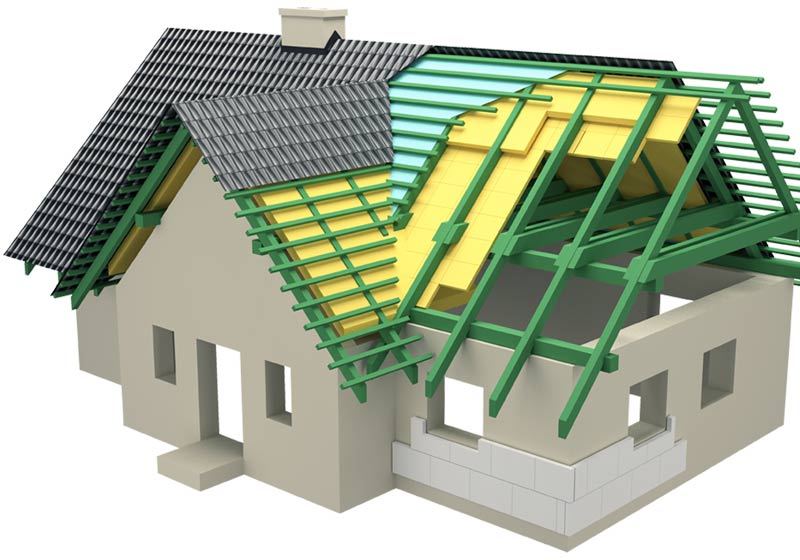Arizona Residential and Commercial Insulation Services
Call Us Today- Home
- »
- Service Areas
- »
- Arizona
Adding more insulation in your home can be an investment that both saves you money and helps make your home more comfortable. If you’re not sure that additional insulation is necessary, first take a look at your energy bills. If they continuously increase throughout the year, this could mean you’re losing air through the walls. Another sign that you may need more insulation is if you experience a lot of noise transfer between rooms. In addition to this, you should also look out for extreme temperature fluctuations between rooms, as this can be a sign that air isn’t properly flowing through the house.
If you do notice any of the issues above, the good news is they don’t have to be permanent. Adding more insulation or even replacing the insulation you currently have can easily remedy a myriad of problems and even make your household more efficient.
There are commercial and residential benefits of new or re-insulation
Types of Insulation Installation Services We Provide in Arizona
Blown-In Insulation
This type of insulation is made from loose-fill insulation material that must be installed with a special machine handled by a trained professional. One of the biggest advantages of using this type of insulation is that it can fit into tight or odd-shaped spaces. You can find mineral wool, cotton, fiberglass, and cellulose made as blown-in materials.
Rolled & Batt Insulation
Rolls of insulation are essentially long blankets of insulation material that are designed to be cut as you install. Batts are the same thing, although these come in pre-cut lengths so they are easier to install. The most common type of material you can find in batts or blankets is fiberglass. However, mineral wool, denim, and plastic fibers can also be found in these forms as well.
Spray Foam
Spray foam is another insulation material that must be installed with a special machine (a spray gun). The foam is formed by mixing two liquids together, and once the mixture is applied, it will expand into cracks and gaps to create a tight seal. This makes it one of the most effective insulation materials, especially since it sets quickly and won’t budget once it’s in place. It’s best to have a contractor to install this to ensure even depth.
Rigid Foam Board
This insulation material can be made from EPS, XPS, or Polyiso foam. Although the boards are thin, they are dense and rigid so they make excellent insulation materials for walls and ceilings. The main downside to this choice is that it’s expensive, although worth it if you’re looking for a high R-value.
Radiant Barriers
Radiant barriers are designed to reflect thermal radiation to prevent heat from being absorbed into the home. This is unlike traditional insulation, which is designed to slow down heat transfer between walls. These are applied in areas where they will face the most heat but still have open air surrounding the front and back. Installation is fairly simple as long as you have a staple gun and ladder.
Arizona Materials Used for Insulation
Fiberglass
Cellulose
Cellulose insulation comes in both blanket/batt and blown-in form. It’s made from ground up recycled paper that is treated with borax, boric acid, or ammonium sulfate. It’s commonly installed in attics, between walls, and in ceilings because it’s effective for reducing noise transfer and the loss of air.
Rockwool (Mineral Wool)
This type of insulation is unique because it’s made out of industrial waste, such as molten glass or stone, that is heated and then spun into a material that resembles wool. It can be installed in walls, the ceiling, flooring, and attics.
Cotton (Denim)
Denim insulation is made from the scraps that are leftover after in denim manufacturing facilities. After being shredded, the material is spun into a wool-like form that can be placed inside of walls and ceilings. It can also be installed in attics and basements with the appropriate barriers in place.
Vinyl
Vinyl insulation is often placed on top of fiberglass insulation to further help minimize the transfer of hot air around the house. It is affordable, strong, durable, resistant to humidity, and resistant to moisture.
Spray Foam
Spray foam can effectively reduce airflow loss in your home to reduce the demand on your HVAC system. This can save you money each month as you use your heater/air conditioner less. Spray foam won’t budget once it is set, making it one of the longest-lasting and most energy efficient insulation materials available today.

Common Areas to Re-Insulate or Add More Insulation
There are many areas of your home that you can add more insulation to or re-insulate completely. However, before making any chances, it’s important to speak with a contractor who can properly inspect the existing insulation.
- Interior Walls
- Attic
- Basement
- Floor
- Exterior Walls
- Garage
- Crawl Space
- Residential
- Commercial
Why Action 1 Insulation in Arizona
At Action 1 Insulation, residence trust our team because we are honest, hard-working, and experts in our field. Our contractors will provide you with personalized advice about your home so you can make the best choice for your needs and budget. From an initial inspection to see the state of your current insulation to installing more insulation throughout the house, we can do it all. Our contractors will even discuss your options so you can decide which plan of action is right for you. We’re simply here to make adding insulation to your home a simple and less stressful process.
Areas we service:
- Phoenix
- Chandler
- Mesa
- Scottsdale
- Peoria
- Glendale
- Surprise
